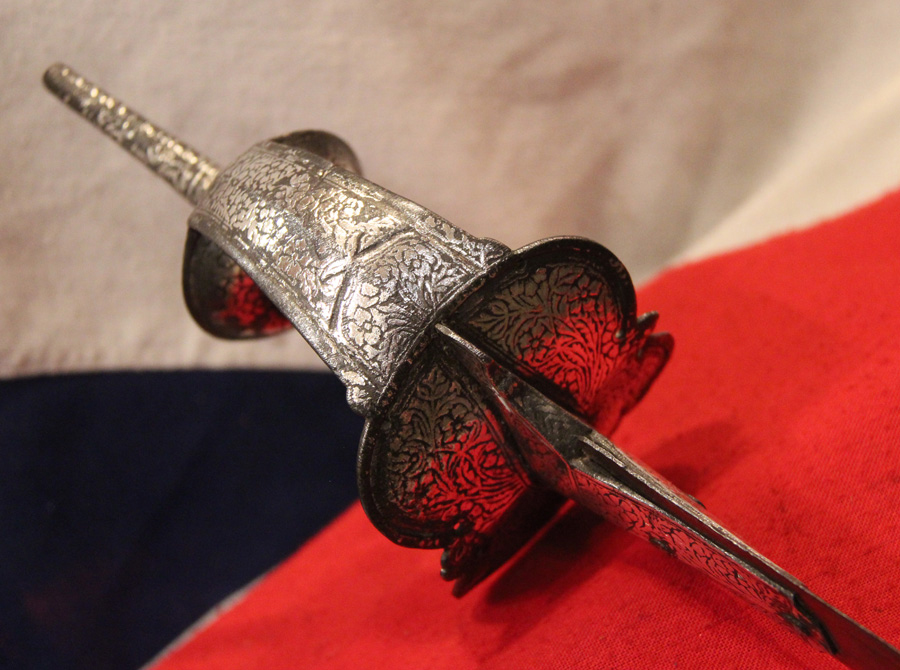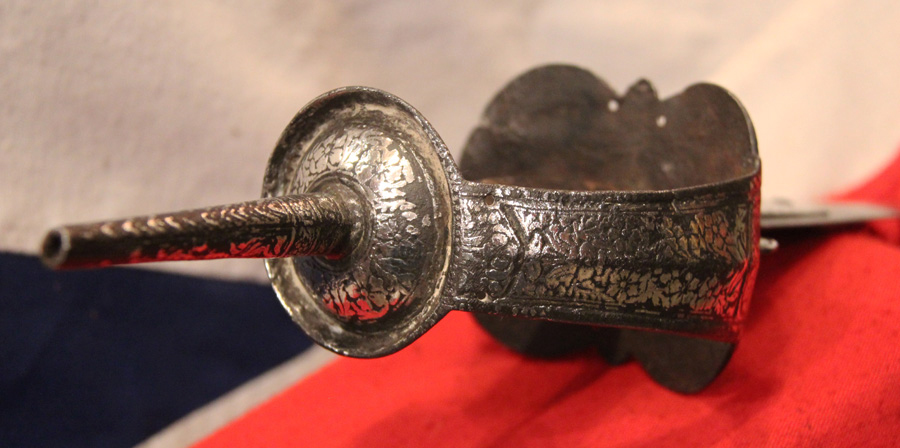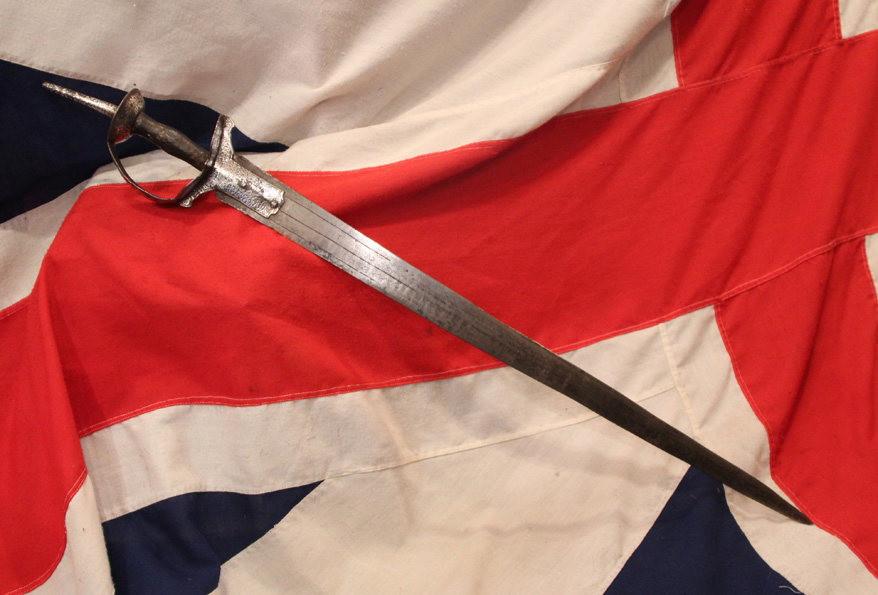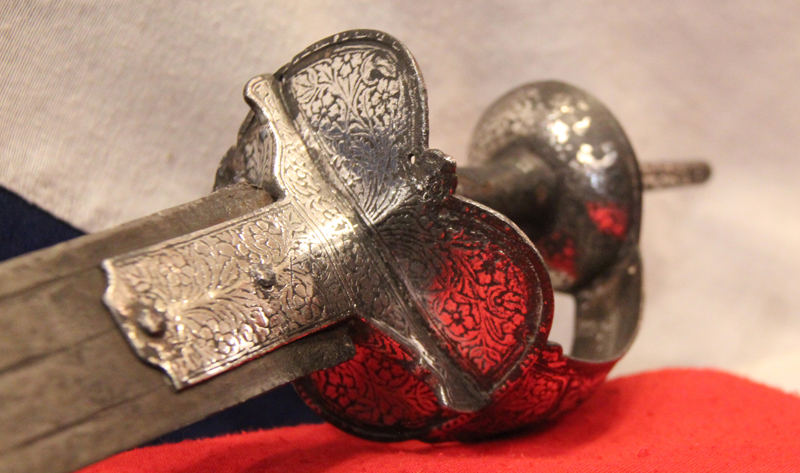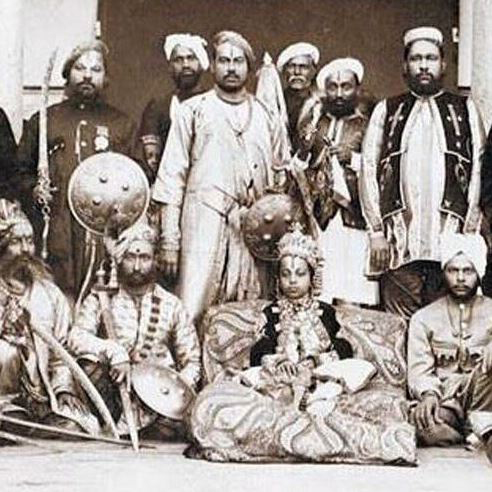SOLD An Incredibly Beautiful and Impressive Khanda 17th Century Two Handed Combat Sword With Koftgari Silver Hilt. The Sword Of A Noble High Born Warrior of Considerable Status
The name Firangi (Foreigner) was apparently given to these swords somewhat later in the 17th Century, as they were mounted with European (Foreign) blades, imported by the Portugese, which were highly valued. Some blades were locally made in the European style. The blades were mounted on the Khanda style hilt and with the long spike extending from the pommel which enabled them to be used as two handed swords.
A fabulous sword, equally as popular with the Mughal, Marathas, Rajput, Hindu and Sikh warriors
The firangi sword characteristically had a straight blade of backsword form (single edged). The blade often incorporated one, two, or three fullers (grooves) and had a spear-tip shaped point. The sword could be used to both cut and thrust. Examples with narrow rapier blades have survived, though in small numbers. The hilt was of the type sometimes called the "Indian basket-hilt" and was identical to that of another Indian straight-bladed sword the khanda. The hilt afforded a substantial amount of protection for the hand and had a prominent spike projecting from the pommel which could be grasped, resulting in a two-handed capability for the sword. Like other contemporary Indian swords the hilt of the firangi was usually of iron and the tang of the blade was attached to the hilt using a very strong resin, additionally, the hilt to blade connection was reinforced by projections from the hilt onto either face of the forte of the blade which were riveted together though a hole passing through the blade. Because of its length the firangi is usually regarded as primarily a cavalry weapon. Illustrations suggest a 16th-century date for the development of the sword, though early examples appear to have had simpler cross-guard hilts, similar to those of the talwar. The sword has been especially associated with the Marathas, who were famed for their cavalry. However, the firangi was widely used by the Mughals and those peoples who came under their rule, including Sikhs and Rajputs. Images of Mughal potentates holding firangis, or accompanied by retainers carrying their masters' firangis, suggest that the sword became a symbol of martial virtue and power. Photographs of Indian officers of Hodson's Horse (an irregular cavalry unit raised by the British) show that the firangi was still in active use at the time of the Indian Mutiny in 1857-58 The khanda can generally be a double-edge but can be a single edged straight sword. It is often featured in religious iconography, theatre and art depicting the ancient history of India. Some communities venerate the weapon as a symbol of Shiva. It is a common weapon in the martial arts in the Indian subcontinent. Khanda often appears in Hindu, Buddhist and Sikh scriptures and art The word khanda has its origins in the Sanskrit meaning "to break, divide, cut, destroy". Used from the time of Abu'l-Fath Jalal-ud-din Muhammad Akbar (15 October 1542 ? 27 October 1605 ), popularly known as Akbar I literally "the great" and later Akbar the Great, he was the third Mughal emperor, who reigned from 1556 to 1605.
29 inch blade to hilt, 35 inches overall
Code: 21005


